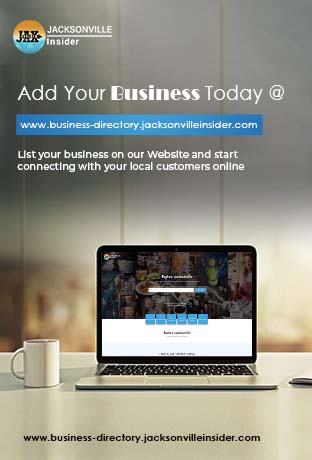Looking to boost your business? It’s time to consider the battle of the marketing titans: Social Media Advertising versus Traditional Marketing. While traditional methods can reach a wide audience, the power of social media advertising cannot be underestimated. With its witty, engaging content and incredible targeting capabilities, social media advertising is the new sheriff in town. So, which one is right for you? Let’s dive in and find out!
Introduction: Social Media Advertising vs. Traditional Marketing
Welcome to our blog article on the fascinating topic of Social Media Advertising vs. Traditional Marketing. In today’s digital age, businesses have more options than ever to promote their products or services. Social Media Advertising has emerged as a powerful tool, revolutionizing the way we connect with customers. It offers a unique platform to reach a vast audience and engage with them directly. With features like targeted ads, real-time analytics, and the potential for viral content, Social Media Advertising can deliver unparalleled results. On the other hand, Traditional Marketing methods have stood the test of time. From print media to television commercials, these tried-and-true techniques have the advantage of reaching a wide range of demographics. Traditional Marketing allows for physical and tangible representations of a brand, establishing trust and credibility. So, which one is right for you? In the following sections, we will explore the benefits of both Social Media Advertising and Traditional Marketing, as well as the key differences between them. By the end of this article, you’ll have the knowledge to make the right choice for your business. So, let’s dive in and discover the exciting world of Social Media Advertising!
Benefits of Social Media Advertising
Social media advertising offers numerous benefits for businesses looking to expand their online presence and reach a wider audience. Here are some key benefits of social media advertising:
- Increased Reach: With billions of active users on social media platforms, advertising on these channels allows you to reach a vast audience. By targeting specific demographics, interests, and behaviors, you can ensure your ads reach the right people who are more likely to be interested in your products or services.
- Enhanced Targeting: Social media platforms provide advanced targeting options that allow you to narrow down your audience based on demographics, interests, behaviors, location, and more. This precision targeting ensures your ads are shown to the right people and increases the chances of conversion.
- Cost-Effective: Compared to traditional advertising methods, social media advertising tends to be more cost-effective. You have control over your budget and can set daily or lifetime spending limits. Additionally, with the ability to track and measure results in real-time, you can optimize your campaigns to maximize return on investment (ROI).
- Improved Brand Awareness: Social media advertising enables businesses to increase their brand visibility and awareness. By consistently showcasing your brand and messaging to a targeted audience, you can establish brand recognition and familiarity, leading to increased trust and loyalty.
- Increased Website Traffic: Engaging social media ads can drive traffic to your website or specific landing pages, helping you generate leads and conversions. By strategically placing call-to-action buttons, enticing headlines, and compelling visuals in your ads, you can encourage users to click through and explore your website further.
- Enhanced Customer Engagement: Social media platforms offer various engagement options like likes, shares, comments, and direct messaging. This creates opportunities for businesses to interact with their audience, address queries, provide support, and build meaningful relationships. Engaging with customers enhances brand trust and fosters loyalty.
- Remarketing Capabilities: Social media advertising allows you to retarget users who have previously interacted with your brand or website. Through custom audience and remarketing options, you can re-engage these users with relevant ads, reminding them about your products or services and encouraging them to convert.
- Measurable Results: Social media advertising provides detailed analytics and reporting tools to track the performance of your ads. You can monitor metrics such as impressions, click-through rates, conversions, and cost per acquisition, allowing you to evaluate the effectiveness of your campaigns and make data-driven decisions for future optimizations.
In conclusion, social media advertising offers businesses a powerful and cost-effective way to increase reach, target specific audiences, boost brand awareness, drive website traffic, engage with customers, and achieve measurable results. By incorporating social media advertising into their marketing strategies, businesses can effectively grow their online presence and achieve their goals in the digital space.
Benefits of Traditional Marketing
While digital marketing has become increasingly popular, traditional marketing methods still hold their value and offer several benefits for businesses. Here are some key benefits of traditional marketing:
- Wider Audience Reach: Traditional marketing methods, such as television, radio, and print advertising, can potentially reach a broader audience than digital platforms. These channels have a wide user base and can target specific demographics based on the time slot or publication audience.
- Tangible and Physical Presence: Traditional marketing materials, such as brochures, flyers, and billboards, provide a physical presence that customers can touch and see. This tangible aspect can create a lasting impression and reinforce brand recognition.
- Local Targeting: Traditional marketing methods allow for precise targeting of specific local audiences. Businesses can choose local newspapers, radio stations, or billboards in a specific area to effectively reach local customers who may not be as active on digital platforms.
- Trust and Credibility: Traditional marketing, especially through established platforms like newspapers or magazines, can enhance a brand’s credibility and trustworthiness. Consumers often perceive these channels as reliable and authoritative sources of information.
- Less Competition: With the focus primarily shifting toward digital marketing, traditional marketing channels might have lower competition. This can give businesses an advantage in grabbing the attention of their target audience, especially if their competitors are solely relying on digital platforms.
- Targeting Specific Demographics: Traditional marketing enables businesses to tailor their messaging and choose the appropriate platforms to reach specific demographics. For example, advertising during certain television shows or in niche magazines allows businesses to effectively target their desired audience.
- Branding and Longevity: Traditional marketing methods provide an opportunity for businesses to establish and reinforce their brand identity. Consistent messaging across different traditional channels can create a strong brand image and build brand loyalty over time.
- Personal Interaction: Traditional marketing methods, such as event marketing, allow businesses to interact with customers on a more personal level. Events, trade shows, and conferences provide valuable face-to-face interactions that can lead to stronger customer connections and trust.
- Perceived Value and Legitimacy: Traditional marketing can create a sense of value and legitimacy for your products or services. For example, a print ad in a well-known magazine might convince customers of a brand’s quality and professionalism.
- Reaching Non-Digital Audiences: While the internet has become ubiquitous, there are still segments of the population that are not as active online. Traditional marketing provides an avenue to reach these non-digital audiences and tap into potential markets that may be overlooked through digital channels.
In conclusion, traditional marketing methods have their own unique set of benefits. They offer wider audience reach, a physical presence, local targeting, trust, credibility, less competition, specific demographic targeting, branding opportunities, personal interaction, perceived value, and the ability to reach non-digital audiences. According to the Social Media Marketing Jacksonville expert, Integrating traditional marketing alongside digital strategies can create a well-rounded marketing approach that effectively reaches a diverse range of customers.
Differences between Social Media Advertising and Traditional Marketing

Social media advertising and traditional marketing differ in various aspects, including their reach, targeting capabilities, cost, engagement levels, and measurement of results. Here are the key differences between social media advertising and traditional marketing:
- Reach: Traditional marketing methods, such as television or print ads, have the potential to reach a wide audience, including those who may not be active on social media. On the other hand, social media advertising has a vast user base, with billions of active users, allowing businesses to reach a global audience.
- Targeting: Social media advertising provides advanced targeting options that allow businesses to reach specific demographics, interests, behaviors, and geographic locations. This precision targeting ensures that ads are shown to the right people who are more likely to be interested in their products or services. Traditional marketing, while offering some degree of targeting, may not be as precise and often relies on reaching a broader audience.
- Cost: Traditional marketing methods, such as television ads or billboards, tend to be more expensive compared to social media advertising. Social media platforms offer flexibility in budgeting, allowing businesses to set daily or lifetime spending limits. Additionally, social media advertising provides cost-effective options and allows for more control over the budget.
- Engagement: Social media advertising offers higher levels of engagement compared to traditional marketing. Users on social media platforms can like, comment, share, and directly interact with ads and businesses. This enables businesses to create interactive and engaging content, fostering customer engagement, loyalty, and brand advocacy. Traditional marketing methods, while providing limited opportunities for engagement, typically do not offer the same level of interactivity and direct communication.
- Measuring Results: Social media advertising offers detailed analytics and reporting tools that allow businesses to track and measure the performance of their ads in real time. Metrics such as impressions, click-through rates, conversions, and cost per acquisition can be monitored, providing valuable insights to optimize campaigns. Traditional marketing methods often lack the same level of accuracy and immediacy in measuring results, making it challenging to assess the direct impact of advertising efforts.
- Flexibility and Adaptability: Social media advertising allows businesses to quickly modify and adapt their campaigns based on real-time feedback and data. Changes to targeting, messaging, or creative elements can be made on the fly, enhancing campaign performance. Traditional marketing methods often require more time and resources for adjustments and may have longer lead times.
- Tangibility: Traditional marketing methods provide a physical presence through mediums such as print ads, billboards, or direct mail. This tangibility can create a lasting impression and add a sense of authenticity and credibility to a brand’s message. Social media advertising, in contrast, relies on digital content that may lack the physicality and tangible nature of traditional marketing materials.
Both social media advertising and traditional marketing have their own unique advantages and can be effective when used strategically. Businesses often find value in combining both approaches to create a comprehensive marketing strategy that reaches a diverse audience and achieves their specific goals.
Which is Right for You?
When it comes to promoting your business, deciding between social media advertising and traditional marketing can be a tough choice. Both options have their own unique benefits and drawbacks, making it important to carefully consider which one is right for you. Social media advertising offers a wide range of benefits, including its ability to target specific demographics and its cost-effective nature. With social media, you can easily reach a large audience and engage with potential customers directly. On the other hand, traditional marketing methods have been tried and tested over time, and can still be effective in certain industries. Print ads, billboards, and television commercials can reach a wider audience, especially among older demographics who may not be as active on social media. However, traditional marketing can be more expensive and may not offer the same level of targeting as social media advertising. Ultimately, the decision of which option is right for you depends on your specific business goals, target audience, and budget. Consider your objectives and weigh the pros and cons of each method before making a choice. Whether you choose to embrace the modern world of social media advertising or stick with the traditional routes, both can help you reach your intended audience and grow your business.
Conclusion: Making the Right Choice for Your Business
In conclusion, when it comes to making the right choice for your business, it’s important to consider the benefits and differences between social media advertising and traditional marketing. While social media advertising offers the advantages of targeted outreach, cost-effectiveness, and real-time engagement, traditional marketing still holds its ground with its tangible and trusted methods. So, how do you decide which route to take? Well, it ultimately depends on your audience, goals, and budget. If you’re aiming to reach a younger, tech-savvy demographic and have a limited budget, social media advertising could be your best bet. On the other hand, if you’re targeting a wider range of customers and prefer more traditional methods like print ads or billboards, then traditional marketing may be a better fit. Ultimately, it’s all about finding the right balance that aligns with your business objectives. Remember, there’s no one-size-fits-all solution. So, be sure to assess your target audience, evaluate your goals, and weigh the pros and cons of each advertising method. By doing so, you can make an informed choice that drives the success of your business.
In today’s digital age, the battle between social media advertising and traditional marketing rages on. We’ve uncovered the benefits of social media advertising, from its targeted reach to its cost-effectiveness. Yet, let’s not forget the advantages of traditional marketing, with its ability to engage a diverse audience through various channels. The differences between these two strategies are undeniable, but the question remains: which one is right for you? As you weigh the options, consider your business’s goals and target market. Whether you choose to embrace the new frontier of social media advertising or stick to more traditional methods, what matters most is making the right choice for your business. So, what are you waiting for? Dive deeper into our blog to explore more marketing insights and uncover the strategies that will take your business to new heights.




